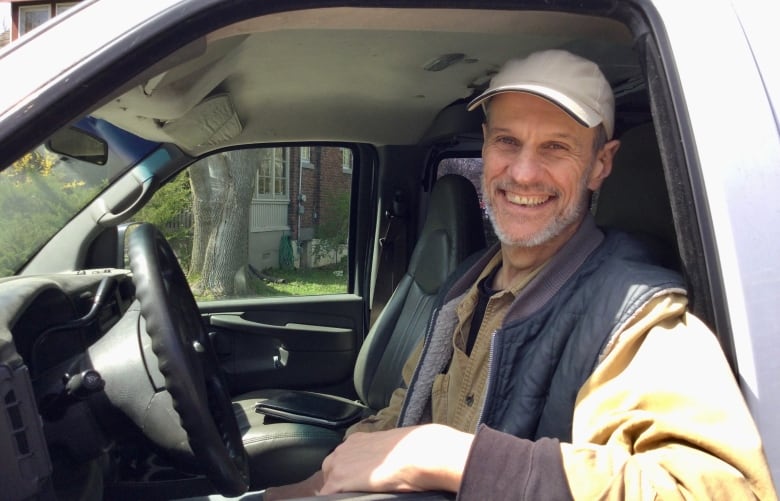David Erland goes to the polls on election day, but doesn’t go behind the screen to cast a ballot. When poll workers hand him a ballot, he hands it right back, choosing to decline his vote.
It’s a valid option in Ontario elections (22,684 voters did it in 2018), though he has often confused poll workers, having to explain exactly what he’s doing. It’s his way of airing frustrations with our electoral system.
“I realized that for as long as I continued to use our existing electoral system to cast my vote, I was giving that system my tacit approval,” said Erland, who lives in Port Hope, 100 kilometres east of Toronto.
Erland calls himself a “wannabe” voter. He insists no issue or policy promise would sway him to cast a vote for a party, until he sees a change to our electoral system. He feels his vote doesn’t matter and the system causes a lack of representation. It’s just one of the reasons people don’t cast a ballot, being highlighted ahead of the province’s June 2 election.
More than 10.2 million Ontarians were eligible to vote in the last election, in 2018, but just 56.67 per cent did (around 5.8 million voters). The highest turnout was coincidentally in Erland’s own electoral district, Northumberland–Peterborough South, at 64.6 per cent.
“It’s always a tough one. You know, why doesn’t somebody vote? Usually people who don’t vote also don’t answer surveys,” jokes Lydia Miljan, professor of political science at the University of Windsor.
The Windsor West electoral district had the absolute lowest turnout provincially in 2018, at 43.3 per cent. Neighbouring electoral district Windsor—Tecumseh also ranks among Ontario’s lowest, as do electoral districts in Brampton, Mississauga, northwest pockets of Toronto (Humber River—Black Creek, York South—Weston) and northern Ontario (Kiiwetinoong, Timmins).
Miljan points to factors like lower incomes, younger populations and immigrant populations, which she says are all associated with lower voter turnout.
CBC put out a call to ask people why they don’t vote. Recurring answers included not feeling informed, lacking time, being too young, out of the country on election day, not liking the candidates or even not liking politics in general (Miljan thinks its a fair critique — she doesn’t like sports!)
Miljan also said turnout depends on if people are excited by candidates or campaigns or if it’s a change election, like Ontario saw in 2018, when voters ousted Kathleen Wynne’s Liberals — resulting in the highest turnout in almost two decades.
Miljan’s been bored by the 2022 campaign so far and doesn’t anticipate change, so expects a lower voter turnout this time.
More advanced polling
Elections Ontario hopes to tackle that. It’s added more advanced polling days, now totalling 10, up from five during the last election. It’s been visiting campuses to encourage students to vote and highlights its new app and online application to vote by mail.
The organization is also doing outreach with more than 2,500 community organizations around the province, at places like cultural centres, friendship centres, libraries and places of worship. The hope is to specifically target new Canadians and first-time voters.
“Elections Ontario remains committed to removing barriers to voting for all Ontarians and ensuring that anyone who wants to vote can do so,” Elections Ontario wrote in an email.
Some individuals have taken it upon themselves to promote voting.
Tania Cameron is trying to boost voter turnout among First Nations. She lives just outside Kenora, in northwestern Ontario, bordering the electoral district of Kiiwetinoong, which has a majority Indigenous population. The district saw the second lowest voter turnout provincially in 2018, at 45.8 per cent.
So Cameron, who is from Niisaachewan Anishinaabe Nation north of Kenora, has been trying to engage voters from First Nations, making sure people know how to vote and register, and explaining provincial issues that matter.
She’s put out a plea to chiefs and heads of Indigenous organizations to not host meetings on election day, which could take voters away from communities and not allow them to vote.
Cameron also wants to ensure voting problems that remote First Nations in northwestern Ontario faced during last fall’s federal election don’t happen again. There were issues around voter cards and an absence of polling stations in some fly-in communities. Elections Canada apologized in November.
Elections Ontario says it has Indigenous consultants visiting communities right now, talking about registration tools and working with chiefs and band councils.
Addressing the First Nations vote
Cameron’s work can be complicated.
“There are a lot of people that say that this is not my government. This is not my system. And I hear them, it isn’t. It’s a government system that was imposed on First Nations people,” she said. “You’re not accepting that you’re part of this colonial system. However, you are picking who sits across from you at the negotiations table.”
She wants First Nations voters to think about who may be the better treaty partner and who is making the most inroads to reach reconciliation.
LISTEN | Ontario Morning examines voting turnout and where it differs in the province:
Ontario Morning from CBC Radio7:57Millions don’t vote in Ontario elections. Here’s how some are tackling low turnout
Ontario’s last election, in 2018, had the highest voter turnout in almost two decades, with about 57 per cent of eligible voters casting a ballot. Still, that means millions didn’t vote. Haydn Watters found out some are trying to change that ahead of the June 2 election.
“I see that First Nations people in these northern ridings aren’t using their political muscle,” she said.
Cameron cited the 2015 federal election, when on-reserve voter turnout skyrocketed, something she would like to see repeated.
“I am a strong advocate for using your right to vote,” she said. “I just love politics. I truly love politics.”

